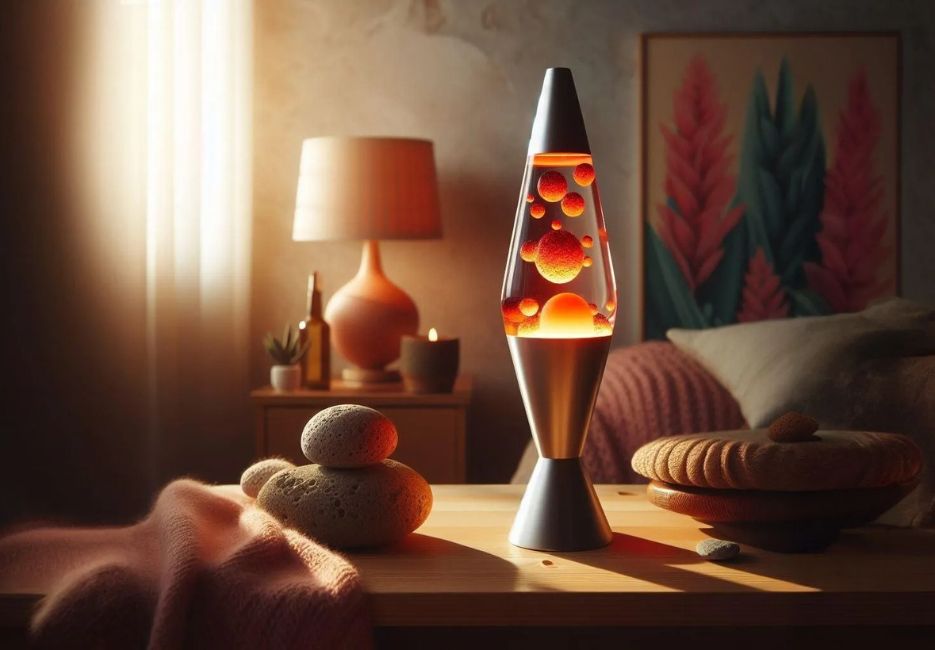Lava lamps have been a popular decorative item for many years, captivating people with their mesmerizing blobs of liquid that seem to defy gravity. These unique lamps create a soothing and relaxing ambiance in any space, making them a favorite choice for bedrooms, living rooms, and even offices. But have you ever wondered how lava lamps work? In this article, we will explore the fascinating science behind these intriguing lamps and uncover the secrets behind their mesmerizing motion.
History of Lava Lamps
The history of lava lamps dates back to the 1960s when they first gained popularity. The original lava lamp, known as the Astro Lamp, was invented by Edward Craven Walker, a British accountant and entrepreneur. Walker was inspired by an odd-looking egg timer he saw in a pub, which used a combination of oil and water to create a mesmerizing effect. Intrigued by the concept, Walker decided to develop a similar device that could be used as a decorative lamp.
After years of experimentation, Walker finally perfected his invention and launched it under the name ‘Astro Lamp.’ The lamp quickly became a sensation, captivating people with its unique and mesmerizing display of floating blobs of colored wax in a liquid. Since then, lava lamps have continued to be a popular decorative item, evolving in design and style to suit the changing trends.
The Science Behind Lava Lamps
The mesmerizing motion of lava lamps is a result of several scientific principles at work. At the core, the lamp operates on the principle of heat transfer and convection. The lamp consists of a glass container filled with a special liquid, usually a combination of water and wax or oil. The wax or oil is chosen for its viscosity, which affects the movement and flow of the blobs.
When the lamp is turned on, a heat source located at the base of the lamp, usually a light bulb, heats up the liquid. As the liquid heats up, the wax or oil begins to melt and becomes less dense than the surrounding liquid. The lighter wax or oil rises to the top, forming blobs of various sizes. As the blobs reach the cooler upper portion of the lamp, they lose heat and start to solidify. Once solidified, the wax or oil becomes denser and starts sinking back down to the bottom of the lamp.
This continuous cycle of heating, rising, cooling, and sinking creates the mesmerizing motion of the blobs in the lava lamp. The exact pattern and speed of the blobs depend on factors such as the temperature of the heat source, the viscosity of the liquid, and the overall design of the lamp.
Components of a Lava Lamp
Lava lamps consist of several key components that work together to create their captivating display. These components include:
– Glass container: The container holds the liquid and provides a transparent viewing surface for the blobs.
– Heat source: Usually a light bulb or an electric heating element, the heat source is responsible for heating the liquid and initiating the motion of the blobs.
– Liquid: The liquid in a lava lamp is typically a combination of water and a special type of wax or oil. The choice of liquid affects the viscosity and the flow of the blobs.
– Wax or oil: The wax or oil is the main component that forms the blobs. Its density changes with temperature, allowing it to rise and sink in the liquid.
– Cap or top: The cap or top of the lamp prevents evaporation of the liquid and keeps the lamp sealed.
How Lava Lamps Work
To understand how lava lamps work, let’s break down the process step by step:
1. When the lamp is turned on, the heat source, usually a light bulb, starts to heat the liquid in the lamp.
2. As the liquid heats up, the wax or oil inside the lamp begins to melt and becomes less dense than the surrounding liquid.
3. The lighter wax or oil rises to the top of the lamp, forming blobs of various sizes.
4. As the blobs reach the cooler upper portion of the lamp, they lose heat and start to solidify.
5. Once solidified, the wax or oil becomes denser and starts sinking back down to the bottom of the lamp.
6. The continuous cycle of heating, rising, cooling, and sinking creates the mesmerizing motion of the blobs in the lava lamp, providing a captivating display.
It’s important to note that the exact timing and motion of the blobs may vary depending on the specific design and settings of the lava lamp.
Tips for Maintaining Your Lava Lamp
To ensure the longevity and optimal performance of your lava lamp, here are some tips to keep in mind:
– Avoid moving the lamp when it is turned on, as this can disrupt the motion of the blobs and cause them to merge or break apart.
– Keep the lamp away from direct sunlight or sources of excessive heat, as this can affect the performance and lifespan of the lamp.
– Regularly clean the glass container and the cap of the lamp to prevent the buildup of residue or dust, which can interfere with the clarity of the liquid and the motion of the blobs.
– If the lamp appears cloudy or the blobs are not moving as freely as before, it may be time to replace the liquid or the bulb.
By following these simple maintenance tips, you can enjoy your lava lamp for years to come and keep it looking as mesmerizing as ever.
Frequently Asked Questions (FAQs)
A: The liquid in a lava lamp is typically a special combination of water and a type of wax or oil. This unique liquid is carefully selected for its viscosity, which plays a crucial role in determining the flow and movement of the mesmerizing blobs in the lamp. The specific type of wax or oil used in the liquid affects how the blobs rise and fall, creating the captivating display that lava lamps are known for. This carefully curated liquid formula is essential for achieving the signature motion and visual appeal of lava lamps.
Q: Can I use a different type of liquid in my lava lamp?
A: Lava lamps are specifically designed to work with a certain type of liquid, usually a combination of water and wax or oil. Using a different type of liquid may not produce the desired effect or could potentially damage the lamp.
Q: Can I replace the bulb in my lava lamp with a higher-wattage bulb for a brighter display?
A: It is recommended to use the bulb specified by the manufacturer for your lava lamp. Using a higher-wattage bulb can generate excessive heat, which may affect the performance and safety of the lamp.
Q: How long does it take for the blobs to start moving in a lava lamp?
A: The time it takes for the blobs to start moving can vary depending on the specific lamp and its design. Generally, it may take anywhere from 1 to 3 hours for the blobs to fully heat up and start moving.
Q: Can I leave my lava lamp turned on all the time?
A: It is not recommended to leave your lava lamp turned on continuously for extended periods. This can lead to excessive heat buildup and may reduce the lifespan of the lamp. It is best to follow the manufacturer’s instructions regarding usage and recommended operating times.
Q: Can I add food coloring or other substances to change the color of the blobs?
A: It is not recommended to add any substances to the liquid in your lava lamp, as this can affect the performance and safety of the lamp. The color of the blobs is determined by the type of wax or oil used in the lamp.
Q: Can I shake or tilt my lava lamp to speed up the motion of the blobs?
A: It is not recommended to shake or tilt your lava lamp while it is turned on. This can disrupt the natural flow of the blobs and may cause them to merge or break apart. It is best to let the lamp operate on its own to maintain the desired motion and display.

Ophelia Scott is a Lighting Specialist at Lamp Insider, with a rich background at Philips, where she honed her skills in crafting beautiful and functional lighting designs. She resides in Colorado and holds a degree from the University of Colorado Boulder.
